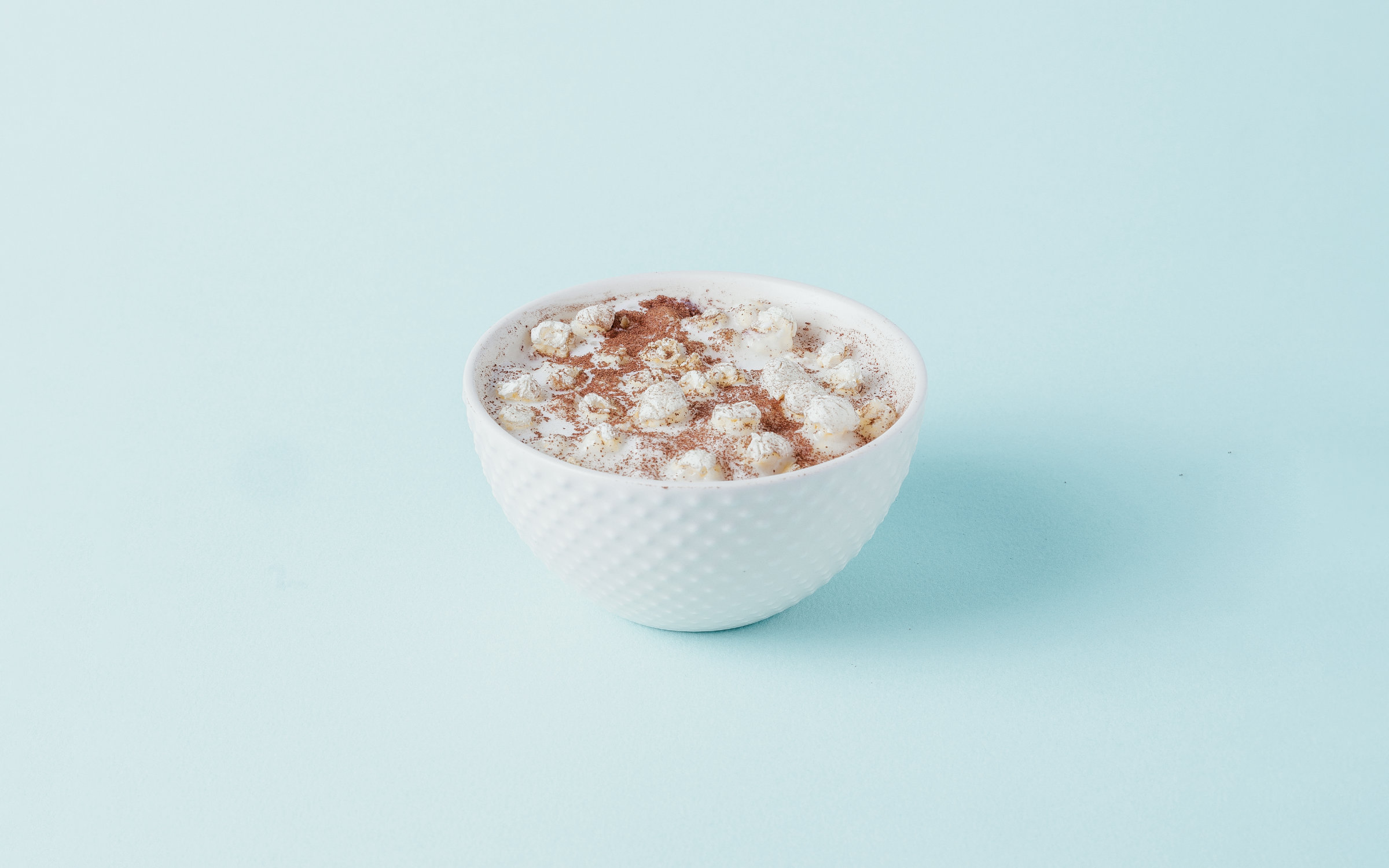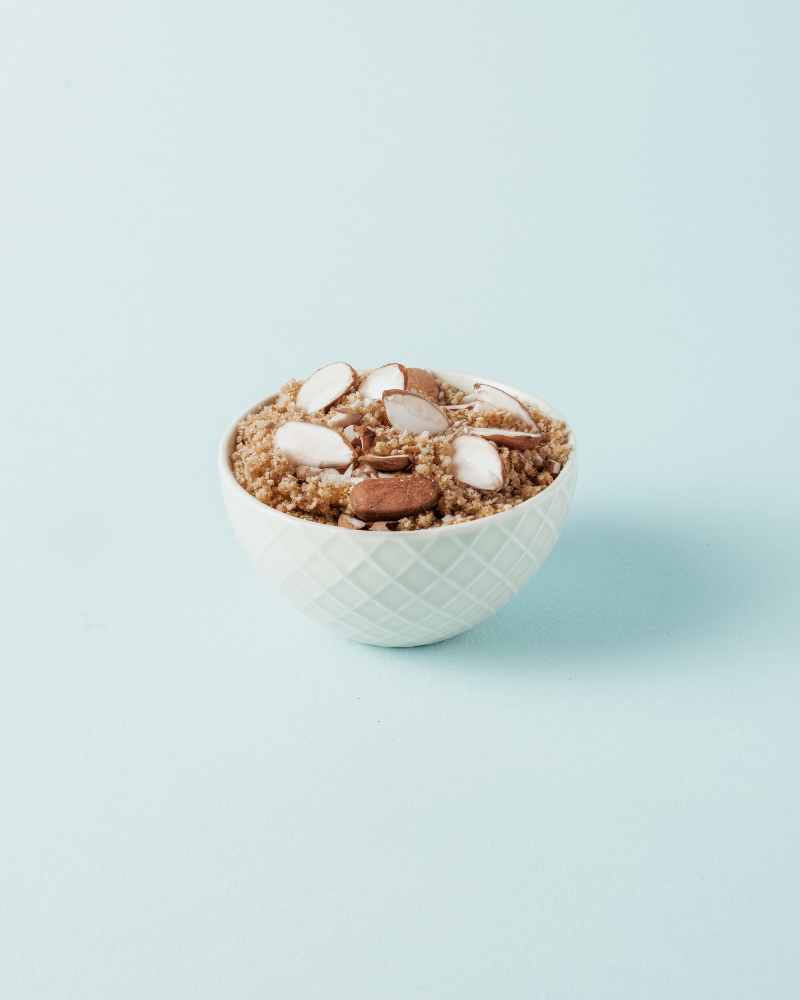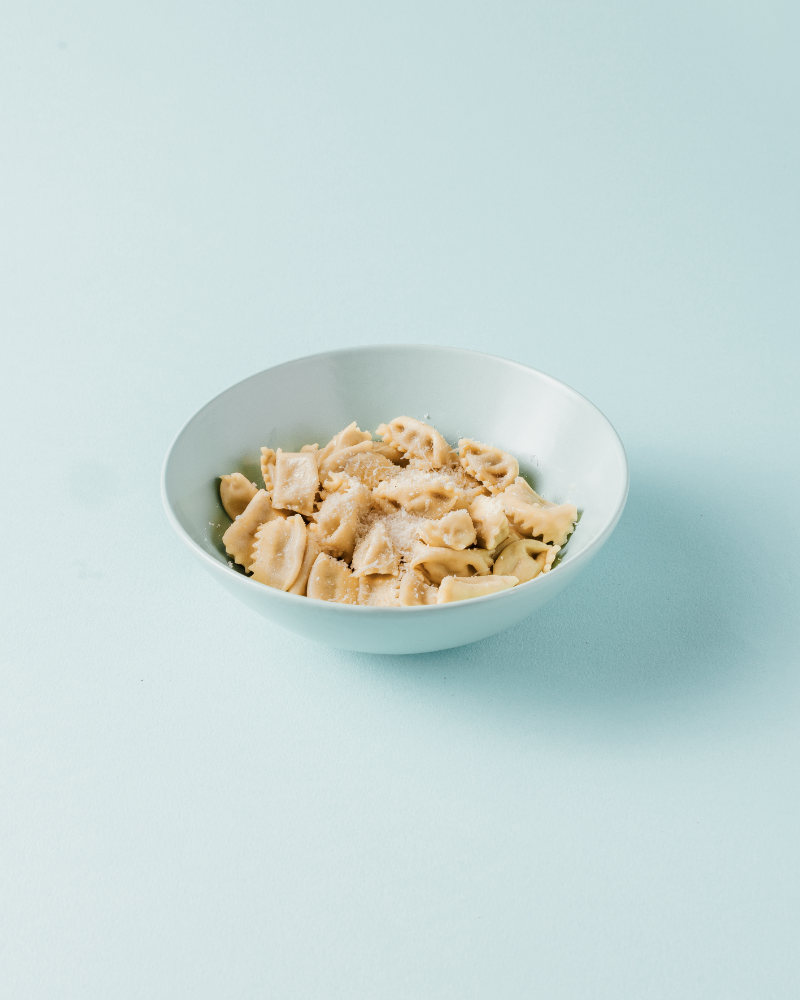The New Gastronome
Got BreastMilk?
by The New Gastronome Editorial
by The New Gastronome Editorial


Canjica is a dish from Brazil, and it is a traditional food served during the celebration of June Festa Junina. It is also known as a popular myth or legend to help moms nursing their babies improve their milk’s quantity and nutritive value.
1200 ml of water
500 g package of white hominy corn
470 ml of milk
100ml of sweetened condensed milk
1 cinnamon stick
3 cloves
1 whole vanilla bean or 1-2 tsp of vanilla bean extract
70g of dehydrated unsweetened, shredded coconut
1 can of coconut milk
a pinch of nutmeg
Wash the corn using a strainer until the water runs clear, then let it drain for a few minutes. Add the washed corn to an instant pot or pressure cooker, and add all 5 cups of water. Cover and cook on manual for 40 mins. While the corn is cooking, rehydrate the coconut – In a medium bowl, add the coconut, the milk, the condensed milk, the sugar, the coconut milk, and the spices. When the corn is cooked, safely release the pressure and open the pan. Add the milk-coconut mixture to the cooked corn and cook on sauté mode (open) for 10-15 mins. Serve with some cinnamon or with toasted coconut. (optional)

Boza is a fermented beverage popular in parts of Southeast Europe and Central and Western Asia. It has been widely consumed for centuries and is still an essential part of the culture in these regions today. What makes boza so interesting is its natural probiotic properties—when you drink it, it is believed to increase breast milk!
125 g white millet
750 g water
140 g granulated sugar
another 100 g of drinking water
Soak the white millet for around one hour; the soaking time may vary depending on the grain used! Put 750g of water in a pot and bring it to a boil. Drain the white millet and add it to the pot, cooking it until soft. After the grain has softened, puree it with a mixer or blender until it is fine enough to be pressed through a fine sieve. Add all your sugar and the remaining 100g of water and mix. Finally, place the mixture into a box and leave it to ferment at room temperature without covering it entirely. It should be mixed every day and should be ready after a few days. Before consuming it, pass it through the fine sieve again. Serve with roasted yellow chickpeas and ground cinnamon.
Feel free to adjust the ratio of sourness and sweetness to your taste. For example, you can keep the fermentation process short if you want a sweeter drink. You can also add wheat flour according to your preference. Finally, if you want a whiter color, use rice instead of millet.

In Africa, it is recommended to eat millet groats during lactation. It contains many vital vitamins and microelements necessary for mother and baby during this period. Millet porridge, named Uji in Kenyan culture, is a great way to improve the milk quality, as well as its taste. It is believed that the milk becomes thicker and more nutritious, which helps the baby feel full longer!
120g of millet flour
Water
Sugar to taste
1 teaspoonful of butter
Pour the millet flour into a large container with a fitting lid and add two cups of water as you mix well to form a slightly thick consistent paste. Cover with the lid and place in a dry place for 2 days to ferment.
You can now remove the top layer that would have formed, stir and set the mixture aside. Pour in two large cups of water and bring to a boil. Pour in the fermented mixture slowly as you mix until you get a slightly thin, consistent mixture. Place the fermented mixture aside and continue mixing the Uji in a circular motion until you see bubbles. Add butter and sugar and let boil for 3 more minutes. Remove from heat and pour into a thermos flask or container of your choice. Some people add milk or butter, but that’s optional—we won’t judge you if you don’t!

Panjiri is a bedside snack traditionally consumed after delivery. This recipe is nourishing and healing but should be eaten in moderation since it has a high calorific value and is nutrient-dense and filling. The postpartum mom who eats this nutritious snack will get abundant vitamins and minerals, including folate, magnesium, iron, and calcium. In addition, the high caloric value of the dish means that it will keep her full for hours on end while providing her with all the nutrients she needs to recover from childbirth safely. However, it should be eaten in moderation, in a tablespoon or a small bowl, since it has a high calorific value and is nutrient-dense and filling.
100-125g Ghee (or as desired)
100 g raw almonds
25-40 g edible gum
5g fox nuts
2 tbsp flax seeds
2 tbsp sesame seeds
150 g fine semolina
120 g whole wheat flour
approx. 70 g powdered jaggery (or as desired)
Heat a large non-stick pan or skillet over medium heat. Once hot, heat 2 tbsp ghee and add the almonds. Roast until they are lightly golden and smell nutty. Remove the almonds. Wipe pan, if needed. Heat another 1-2 tbsp ghee and add the edible gum crystals. Roast, often stirring, for 4-5 minutes. The edible gum crystals will look crisp and swell to almost double in size. Remove and set these aside along with the nuts. Heat 3 tbsp of ghee and add the fox nuts. Roast for 10 minutes until they turn slightly golden and crispy. Remove and keep aside. Heat 2-3 tbsp of ghee and add the semolina. Stir the semolina frequently at first and continue toward the end, so it roasts evenly. Roast for 10-12 minutes or until it turns golden. Remove from heat and place into the large bowl. Clean off the semolina and ghee from the pan. Without adding ghee, add the whole wheat flour to the pan. Stir the flour frequently at first and continuously toward the end to roast evenly. Dry-roast for 17-20 minutes until the atta turns golden and releases a nutty aroma. You want to ensure it’s fully cooked. Remove from heat and set aside in the large bowl. Dry roast the flax and sesame seeds in a non-stick pan and keep them aside. In a food processor, add the fox nuts and pulse to chop until they have a coarse, crunchy consistency. Remove and set aside. Add the almonds and edible gum crystals (from Steps 1-2) into the food processor and pulse to chop until they have a coarse, crunchy consistency. You want these to be grainy but not fine like a powder. Remove and add to the large bowl. Mix to combine all the prepared ingredients (whole wheat flour, semolina, fox nuts, almonds & edible gum, sesame seeds & flax seeds). Add the powdered jaggery/cane sugar and remix it. Taste and adjust sweetness as desired. If the mixture is dry, feel free to add ghee. Allow cooling. Store in an airtight container in a cool, dry place.
*Edible gum: derived from tree sap and is said to be warming and strengthening the body. As the gum crystals cook, they’ll pop and swell to about double the size.

In Italy, every region has its own recipe for breastmilk production for new moms. We chose Piedmont as the example because it’s the region we live in and also because we are huge fans of Plin! Plin ravioli is a small boat shape, made by hand with the method from which the name of this ravioli derives. The dialect term “Plin,” pinch, refers to how the filling is closed inside the fresh pasta by gently pinching the ends.
For pasta:
4 eggs
00 flour: 400 gr
For the stuffing:
200 gr rabbit legs
250 gr veal pulp
200 gr pork loin
1 onion
250 gr carrots
150 gr celery
60 gr spinach
1 egg
15 gr Parmigiano Reggiano
Salt to taste.
Pepper as needed.
EVO oil: to taste
Vegetable broth: to taste
Take the flour and form a mound on a cutting board or plane, which you can use for kneading. Next, make a fireplace where you will place the 4 eggs individually. Now you can beat the eggs with a fork and incorporate the flour. When the flour is partially incorporated, knead it with your hands. The dough must be soft and elastic. If it is too hard, add a tablespoon or two of water. Once you have a nice homogeneous dough, let it rest, wrapped in cling film.
Now turn your attention to preparing the roast: fry the rabbit legs in a pan with a bit of oil. Then, in another pan with a little oil, color the pork and veal, which have been cleaned of excess fat (if necessary, ask your butcher to clean them for you). While the meat is roasting, clean and cut the vegetables into large pieces. Now combine the rabbit with the beef and pork and also the vegetables. Next, add salt, pepper, and one or two vegetable stock or water ladles. Cover with a lid and cook for at least 1 hour, adding liquid as needed. In the meantime, fry the spinach in a pan with a bit of oil (about 5 minutes). When the meat is cooked, remove it from the pan and let it cool. Keep the vegetables and the gravy from the meat; you will need it to season the Plin. Next, Debone the rabbit, cut the meat into pieces, put it in a blender, and chop it together with the egg, spinach and grated Parmesan. If the filling is too compact, dilute it.
At this point, roll the dough as thin as possible; it must be long and narrow (about 7-8 cm). Next, arrange the filling: big as about one hazelnut per Plin, spaced a finger from each other. Then, turn the dough over the filling and pinch it on both sides, taking care to let the air out and remove the excess dough by cutting about half a centimeter from the filling lengthwise and then separate the ravioli sideways. Once you have finished preparing all the agnolotti del Plin, cook them in boiling water for a few minutes and season them: you can blend the cooking juices with the vegetables or simply accompany them with a knob of butter.
The opinions expressed in the articles of this magazine do not necessarily represent the views of
The New Gastronome and The University of Gastronomic Sciences of Pollenzo.
Photos ©Aarón Gómez Figueroa.
